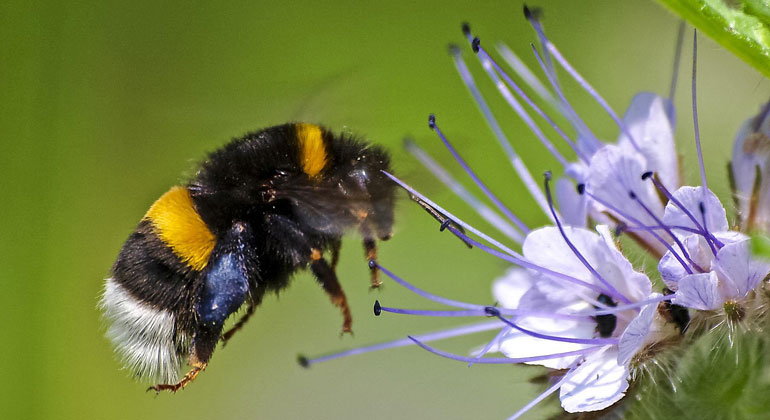The forest as a shelter for insects in warmer climates?
Insect diversity is declining in Bavaria. Land use is a major driver, but the impact of climate change is still unknown. A study by the University of Würzburg has now investigated how both factors interact.
About 75 percent of our food crops and more than 80% of wild plants require pollination by insects. The value of crop pollination alone is estimated at up to 577 billion US dollars per year worldwide. The best-known pollinators are bees, but these are by no means the only insects that provide this service for humans and nature – flies, wasps, beetles, butterflies and moths also play important roles.
Several studies have identified a significant decline in insect populations in recent decades – also in Germany. The focus so far has been on the loss of suitable habitats for insects; for example, the conversion of natural areas into agricultural or urban areas. But what are the consequences of land use in combination with warmer and dryer climates for pollinating insects? And what could be done to mitigate possible negative consequences? This was investigated in a new study by the Julius-Maximilians-University (JMU) Würzburg.
The key findings
The JMU research team and collaborators reveal for the first time how climate and land use together shape the diversity of pollinating insects at local and landscape scales across Bavaria. Based on more than 3200 identified pollinator species from 179 locations in forest, grassland, arable and urban habitats, they find homogenization of pollinator communities in warmer climates. This suggests an overall loss of pollinator diversity under future climates.
Individual taxa such as bees, flies, beetles, butterflies, and moths showed different responses to warmer and dryer climates, but the general pattern indicates that landscapes with higher proportions of forest maintain more diverse pollinator communities. “One key finding therefore is that forest in the landscape can cushion the effects of climate warming to a certain extent.” explains Cristina Ganuza, PhD student in the group of Professor Ingolf Steffan-Dewenter at JMU’s Department of Animal Ecology and Tropical Biology, and lead author of the study.
“The study underpins that in addition to the importance of floral resources and the negative effects of land use intensification, climatic conditions play an increasingly important role for the maintenance of pollinator diversity. For example, the combination of high temperatures and low precipitation negatively affected total pollinator diversity, while bee richness in urban areas was negatively affected by higher mean temperatures“, explains Steffan-Dewenter.
The relevance for humans and nature
High pollinator diversity is needed for high pollinator performance. Ganuza: “However, the combination of ongoing climate change and current land use will only allow certain pollinator species to survive in different habitat types.”
“We conclude that a large proportion of forested land in the landscape could serve as refuge for insects from climate warming,” Ganuza said. “This is likely because forests and forest edges provide largely natural conditions which buffer extreme heat and drought compared to more human-influenced habitats.”
Another suggestion from the researchers would be to lower the air temperature in cities, for example through greening. “This could lead to more bee species being able to live in urban areas”, the biologist explains. In short, insects like it diverse. And flowering plants that are as diverse as possible are essential for the small animals in all areas.








